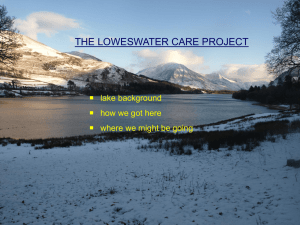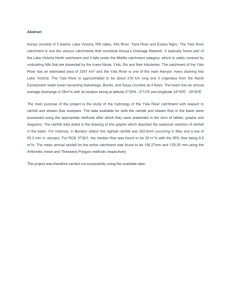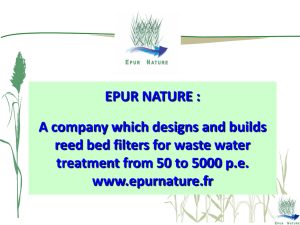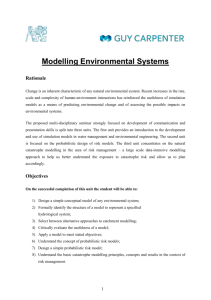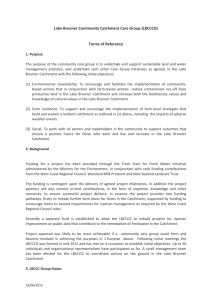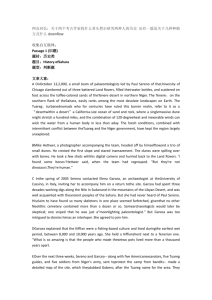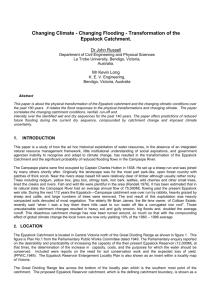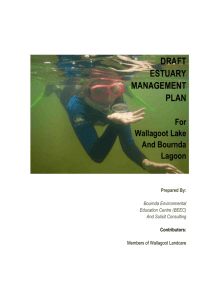Water Balance Problems
advertisement
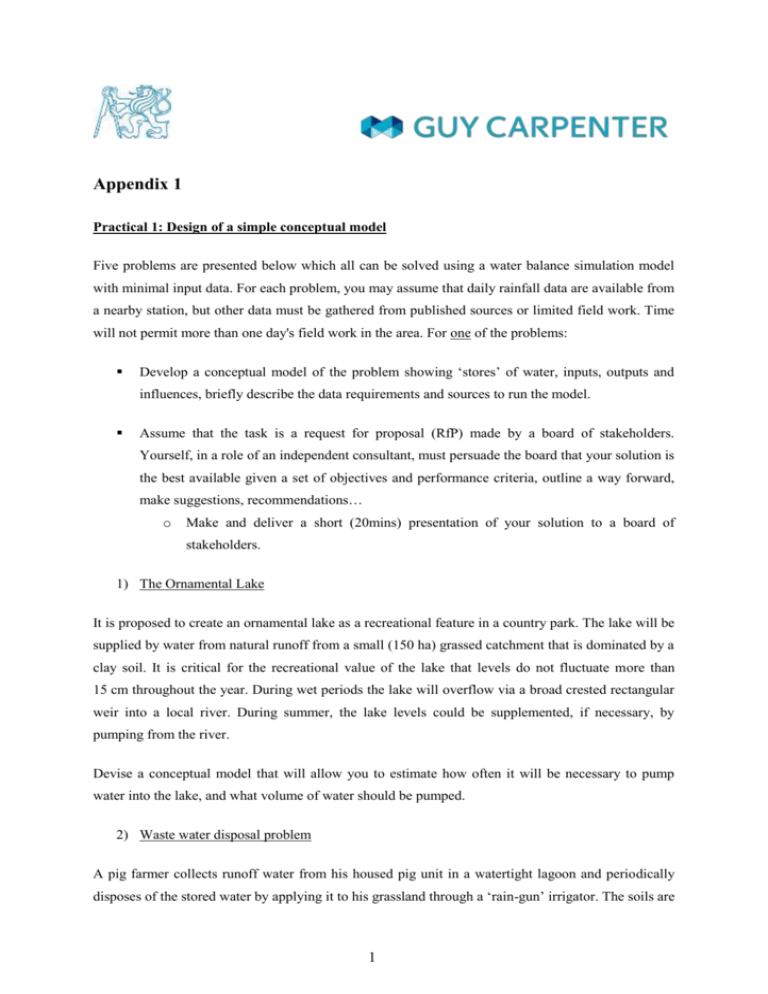
Appendix 1 Practical 1: Design of a simple conceptual model Five problems are presented below which all can be solved using a water balance simulation model with minimal input data. For each problem, you may assume that daily rainfall data are available from a nearby station, but other data must be gathered from published sources or limited field work. Time will not permit more than one day's field work in the area. For one of the problems: Develop a conceptual model of the problem showing ‘stores’ of water, inputs, outputs and influences, briefly describe the data requirements and sources to run the model. Assume that the task is a request for proposal (RfP) made by a board of stakeholders. Yourself, in a role of an independent consultant, must persuade the board that your solution is the best available given a set of objectives and performance criteria, outline a way forward, make suggestions, recommendations… o Make and deliver a short (20mins) presentation of your solution to a board of stakeholders. 1) The Ornamental Lake It is proposed to create an ornamental lake as a recreational feature in a country park. The lake will be supplied by water from natural runoff from a small (150 ha) grassed catchment that is dominated by a clay soil. It is critical for the recreational value of the lake that levels do not fluctuate more than 15 cm throughout the year. During wet periods the lake will overflow via a broad crested rectangular weir into a local river. During summer, the lake levels could be supplemented, if necessary, by pumping from the river. Devise a conceptual model that will allow you to estimate how often it will be necessary to pump water into the lake, and what volume of water should be pumped. 2) Waste water disposal problem A pig farmer collects runoff water from his housed pig unit in a watertight lagoon and periodically disposes of the stored water by applying it to his grassland through a ‘rain-gun’ irrigator. The soils are 1 of sandy loam texture and over-lie a major chalk aquifer. To avoid the ‘dirty’ water entering the aquifer, he should only apply water to the land when there is a sufficient soil water deficit to accept the water. Develop a conceptual model to help the farmer decide when he can, and cannot, dispose of his dirty water. Include recommendations on what data he will need to collect to enter into the model. 3) The Oasis in the desert There is a proposal to develop the agriculture in a small oasis in a semi-arid area by introducing small petrol-motor-driven pumps to allow small-scale irrigation. However, the water-table, which is only 1.5 m below ground level at the oasis, is only recharged by local rainfall percolating through the sand dunes within a 3 km radius of the oasis during the three-month rainy season. Historical daily rainfall data are available from a met station nearby. Develop a conceptual model to estimate the long term recharge volume to the shallow aquifer and the water requirements for irrigated agriculture that would allow a decision to be made as to whether pumped irrigation is sustainable. 4) The reed bed A reed bed is to be created in a loamy catchment by diverting a small stream that drains a small rural catchment into an existing low lying area. Excess water is drained from the reed bed by a sluice gate at the downstream end, however, it is not known if the runoff from the catchment will be sufficient to maintain water levels in the reed bed at crucial times of the year. Develop a conceptual model to simulate the seasonal fluctuations in water level within the reed bed, with a view to determining whether or not the reed bed is feasible. 5) The tea irrigation scheme It has been proposed to dam a small stream at the bottom of a catchment in the Southern Highlands of Tanzania to develop a reservoir from which to irrigate 600 ha of nearby tea plantations during the sixmonth dry season. Historical daily rainfall and evaporation data are available from a met station nearby. The soil in the area is a sandy loam over clay. Develop a conceptual model to determine if the yield of the catchment is sufficient to meet the crop water requirements, and then to calculate the storage volume of the reservoir at different times during the year. 2 Prague, 18th February 2016 Miroslav Hrncir, Dana Kucerova & Guy Carpenter Petr Sklenar & Dept. Hydraulics and Hydrology FCE CTU 3
